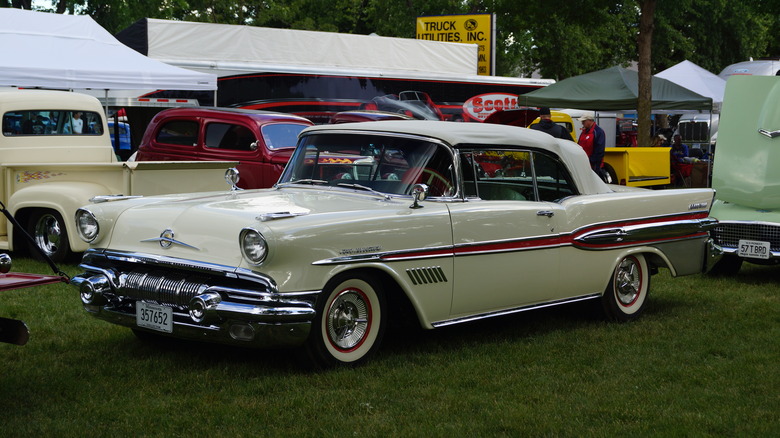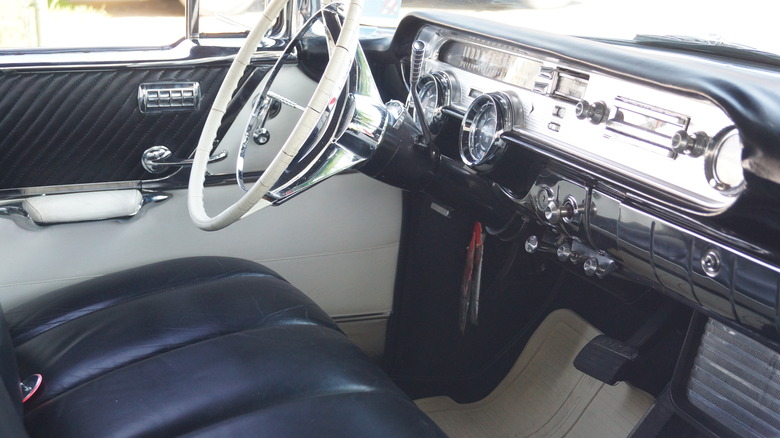Here's What Made The 1957 Pontiac Bonneville So Iconic
You don't see many 1957 Pontiac Bonnevilles on the road these days. In fact, you never did. Only 630 Bonnevilles were produced for the first model year, but those 630 vehicles ensured thousands of later models would be produced for decades. The Bonneville embodied the old auto industry proverb: "You can sell a young man's car to an old man but you can't sell an old man's car to a young man."
That was the problem that Pontiac faced when new general manager Semon "Bunkie" Knudsen took over the struggling brand in 1956. Despite its longtime history of building powerful, underappreciated muscle cars, Pontiac had a reputation for reliable, conservative, unexciting transport. The brand was a bad match for the economic boom of the '50s, with the WWII generation taking over an ever-expanding chunk of the car market and seeking fun wheels. Something had to change. Knudsen worked with his new heads of engineering, E.M. Estes and John DeLorean, to create a vehicle as innovative in its style as its engineering.
[Featured image by Greg Gjerdingen via Wikimedia Commons | Cropped and scaled |CC BY-SA 2.0]
A legacy built from a few hundred cars
The Pontiac Bonneville legacy started in the eponymous salt flats in 1954 with a hyper-expensive Space Age racer, and its 1957 mass market debut was less a car than a trim level. The first Bonneville was a high-performance upgrade of the Pontiac Star Chief. At the time, it was the fastest production Pontiac ever made, with a 315hp, 347 cubic-inch V8 that ran 0-60 in just nine seconds. It didn't skimp on luxury, either: the 1957 Bonneville came with Hydra-Matic automatic transmission, power everything, and sleek leather upholstery. All that justified the then-high sticker price of $5,782 — better than $60,000 today.
It's the outside, however, that people tend to remember most. The front featured ornate grill work in a subtle waterfall pattern and hooded headlamps trimmed in chrome. The back rocked classic 1950s fins and elliptical chrome exhausts. It was a car that young and old gravitated to in spite of the sizable sticker price.
The 1957 Pontiac Bonneville represented a change in Pontiac's fortunes, rebranding the company from GM's least-loved brand to its de facto performance division, home to icons like the Catalina, GTO, and Trans Am. There would be 10 generations of Bonnevilles before Pontiac ultimately flopped in 2009. If you want to buy an original, however, brace yourself: '57 Bonnevilles in good condition routinely sell for more than $150,000.
[Featured image by Greg Gjerdingen via Wikimedia Commons | Cropped and scaled |CC BY-SA 2.0]

